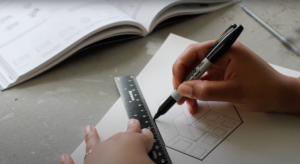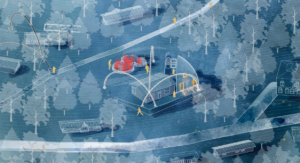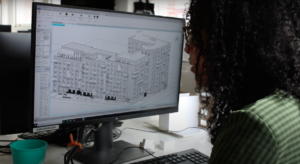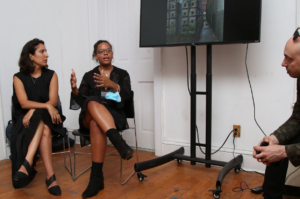Meet Maintainers Fellow Jennah Jones: The Circular Economy is a Collaborative Economy
– by Jennah Jones
In the summer after I graduated high school, two seemingly unrelated events occurred within the same week. Gabriel Garcia Marquez — Colombian literary giant and my favorite author at the time — had passed away. That same week, I enrolled in a beat-making workshop at the local college. We were tasked with using an existing NPR story to create a medley. I chose to interlay the NPR reporting of Garcia Marquez with melodies that relayed my emotional response. Though the “beats” we were sourcing were secondhand, I thoroughly enjoyed the process of creating something new with existing matter, especially as a way to grow more connected to a piece. That summer, I forged a relationship with reuse, and it sparked an interest in the circular economy.
Fast forwarding nearly a decade later, I explore these themes in the context of the built environment. I am a waste consultant at the Center for Zero Waste Design in Brooklyn, NY, and in a few short months, I’ll be entering my final year of the Master of Architecture program at Columbia University. At the Center, I split my time between advising architects on waste reduction strategies for new building projects and conducting research on material reuse and composting as alternatives to landfilling. I’m excited and honored to augment my knowledge of repair, maintenance, and the circular economy with the Maintainers Movement as this year’s Maintaining Localities Fellow.
How did I get here?
Over the years, I’ve served as a design strategist in varying capacities. Tesla was my first job after graduating college. I had a Bachelors in Product Design, and joined Tesla’s Material Innovations team as a postgraduate intern to conduct impact tests on new windshield assemblies and car doors. Though I thoroughly enjoyed the work, I decided to supplement my internship by spearheading a windshield recycling pilot program that targeted four Tesla auto repair shops in the area. Recycling windshields is incredibly difficult, as the components of plastic and glass are so intermixed that they require multiple machinery to separate the two streams into sanitized piles.

The pilot allowed me to study the feasibility of sowing in circular frameworks in an existing, mid-sized company. Since windshield recycling doesn’t come with the same cultural cache as the electric vehicle movement, I also gained the skill to advocate for unattractive decisions that weren’t immediately profitable. At the end of my internship, my passion for circular economy advocacy surpassed my interest in electric vehicle design, and I decided to pursue a graduate degree in architecture to learn about material upcycling at the city scale.

Designing for environmental justice
Graduate school let me return to my original fascination with reuse, as I spent much of my time studying the rich histories that were wrapped in a building’s materials and in the community in which these materials sit. I also studied the thornier legacies pertaining to New York City’s urban planning, learning that major highways spew pollution into predominantly black and brown neighborhoods, and how African burial grounds were exhumed for government construction, amid protests. As my knowledge of the built environment grew, my studio projects became interventions for achieving environmental justice through adaptive reuse. They were imbued with interviews, ethnographic research, and design styles inspired by magical realism and community resilience.


I supplemented my academic pursuits with a variety of internships: one with BlocPower, a clean tech startup that focuses exclusively on providing clean energy to historically black and brown neighborhoods; a research assistantship at the Natural Materials Lab, a Columbia laboratory that designs earth-based building materials for urban contexts; and Julia Watson LLC, a design firm that archives indigenous architectural innovation through Watson’s book series, Lo-TEK: Design for Radical Indigenism. Through each work experience, I’ve learned about a different stakeholder involved in the design of our built environments – private corporations, investors, architects, trash collectors, recycling center managers, building staff and management, research institutions, community leaders, and residents – each with their own metrics for success. These perspectives largely shape how I approach my current work at the Center for Zero Waste Design and our tendency towards advocacy and interdisciplinary collaboration.

Through the Maintainers Movement Fellowship, I’m given the opportunity to deepen my understanding of the political, social, and environmental underpinnings of New York City’s linear consumption models, and how our relationship with maintenance and value will need to change in order to activate a circular economy on a larger scale. I look forward to bringing you along this journey with me, as we sculpt potential futures using the materials of today.